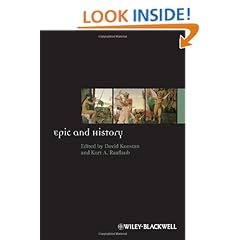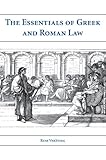 I see London Reviewer Natalie Bennett didn't find Adrian Goldworthy's "The Fall of the West: The Slow Death of the Roman Superpower" a particularly interesting read.
I see London Reviewer Natalie Bennett didn't find Adrian Goldworthy's "The Fall of the West: The Slow Death of the Roman Superpower" a particularly interesting read."It might make a good board game, but it is hard to get interested in this fast-moving, if shortlived, cast of characters, about which we learn little. So while as a reference this is a handy book, it wouldn't be the best thing to take on a long train trip when seeking an engaging read." - Nancy Bennett, Blogcritics
I realize dates and political context are important but even with my passion for ancient history, I find it difficult to plow through such scholarly tomes from front to back. Perhaps I'm just too used to doing research on the internet and targeting specific aspects of a culture or a historical figure's life to force myself to endure an unappetizing meal of bare facts without the more interesting human elements many scholars unfortunately tend to overlook in their effort to explain The Big Picture.
Still, somebody has to write the reference books so when we read historical fiction page turners by such authors as Conn Iggulden, we have somewhere to look to check which portions of the story are true and which ones benefited from the author's quite formidable imagination.
I recently finished Iggulden's riveting Genghis trilogy and was so intrigued with this multi-faceted conqueror and that period of history (1200s CE - a bit out of my usual ancient realm) that I've spent quite a bit of time researching some of the details in The Mongol's Secret History so I could be clear on which details of the story and the marvelous characterizations were based on fact. I actually think I learn more and REMEMBER more this way than by simply reviewing a compendium of facts.























